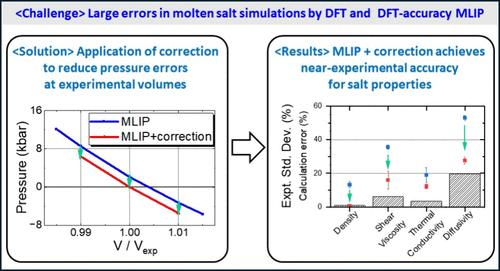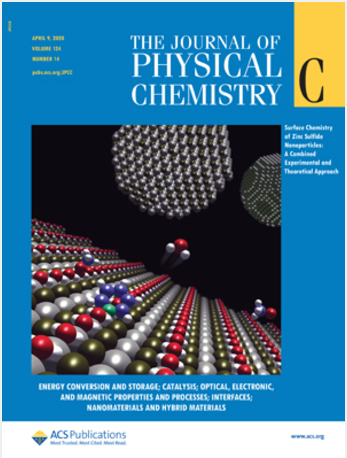Correction to Density Functional Theory Calculations and Machine Learning Interatomic Potentials for Molten Salts to Achieve Experimental Accuracy
IF 3.3
3区 化学
Q2 CHEMISTRY, PHYSICAL
引用次数: 0
Abstract
Despite the considerable success of density functional theory (DFT) in a broad class of materials, there are no exchange–correlation functionals or dispersion corrections that can systematically achieve high accuracy in molten salt simulations; for example, the density is often significantly underestimated. This study proposes a method to construct a correction potential that can fill the difference between DFT and experiments, using KCl as a test case. First, a machine learning interatomic potential (MLIP) with DFT accuracy was constructed. Subsequently, a correction potential was prepared to remove residual stresses brought by the MLIP at experimental densities. It was found that a small cation–anion pairwise correction potential is sufficient to significantly improve not only the density but also other material properties, suppressing calculation errors to a level comparable to the deviation of experimental data. This method is versatile and is expected to help realize experimental accuracy in molten salt simulations.

修正熔盐的密度泛函理论计算和机器学习原子间位势,以实现实验精度
尽管密度泛函理论(DFT)在各类材料中取得了巨大成功,但目前还没有交换相关函数或色散修正可以在熔盐模拟中系统地实现高精度;例如,密度往往被严重低估。本研究以 KCl 为试验案例,提出了一种构建修正势的方法,以填补 DFT 与实验之间的差异。首先,构建了具有 DFT 精确度的机器学习原子间势(MLIP)。随后,制备了一个修正势,以消除 MLIP 在实验密度下带来的残余应力。研究发现,一个小的阳离子-阴离子成对校正电势不仅足以显著改善密度,还能改善其他材料特性,将计算误差抑制到与实验数据偏差相当的水平。这种方法用途广泛,有望帮助实现熔盐模拟的实验精确度。
本文章由计算机程序翻译,如有差异,请以英文原文为准。
求助全文
约1分钟内获得全文
求助全文
来源期刊

The Journal of Physical Chemistry C
化学-材料科学:综合
CiteScore
6.50
自引率
8.10%
发文量
2047
审稿时长
1.8 months
期刊介绍:
The Journal of Physical Chemistry A/B/C is devoted to reporting new and original experimental and theoretical basic research of interest to physical chemists, biophysical chemists, and chemical physicists.
 求助内容:
求助内容: 应助结果提醒方式:
应助结果提醒方式:


